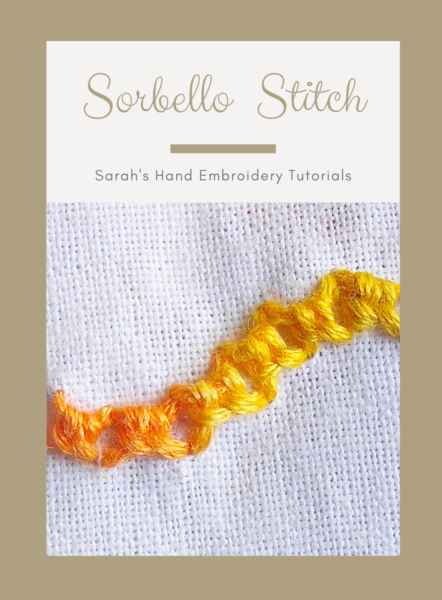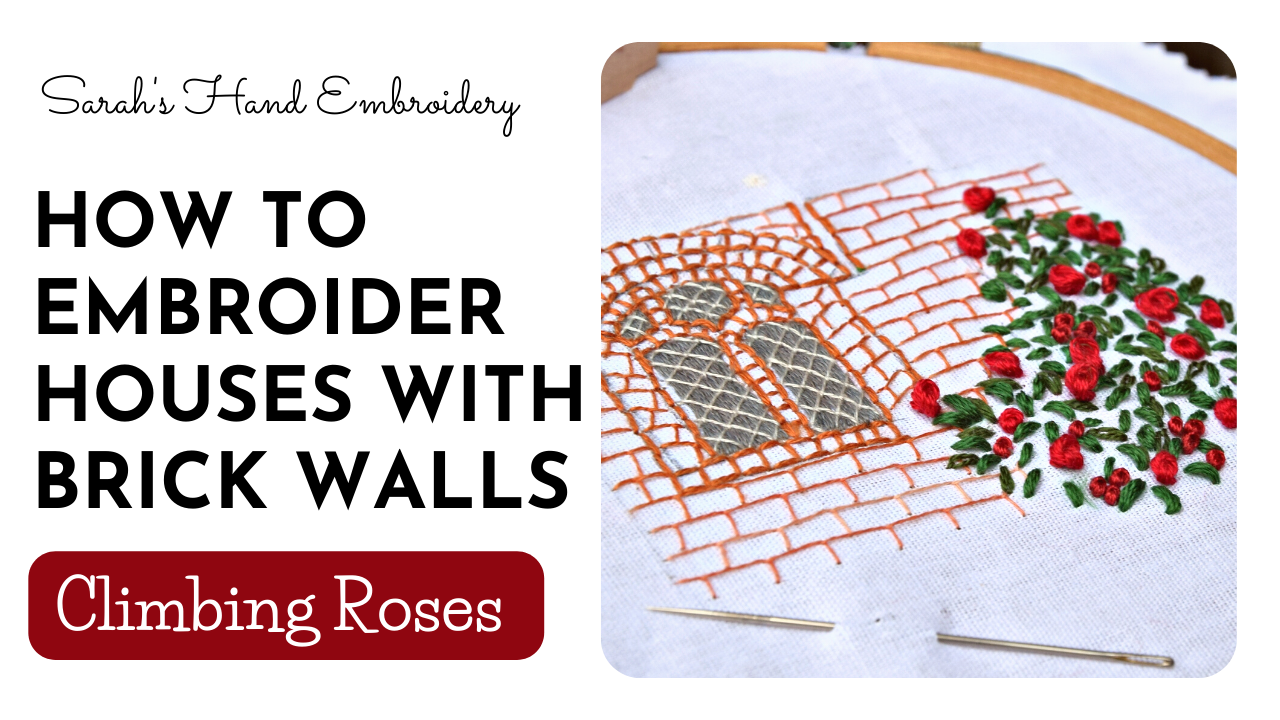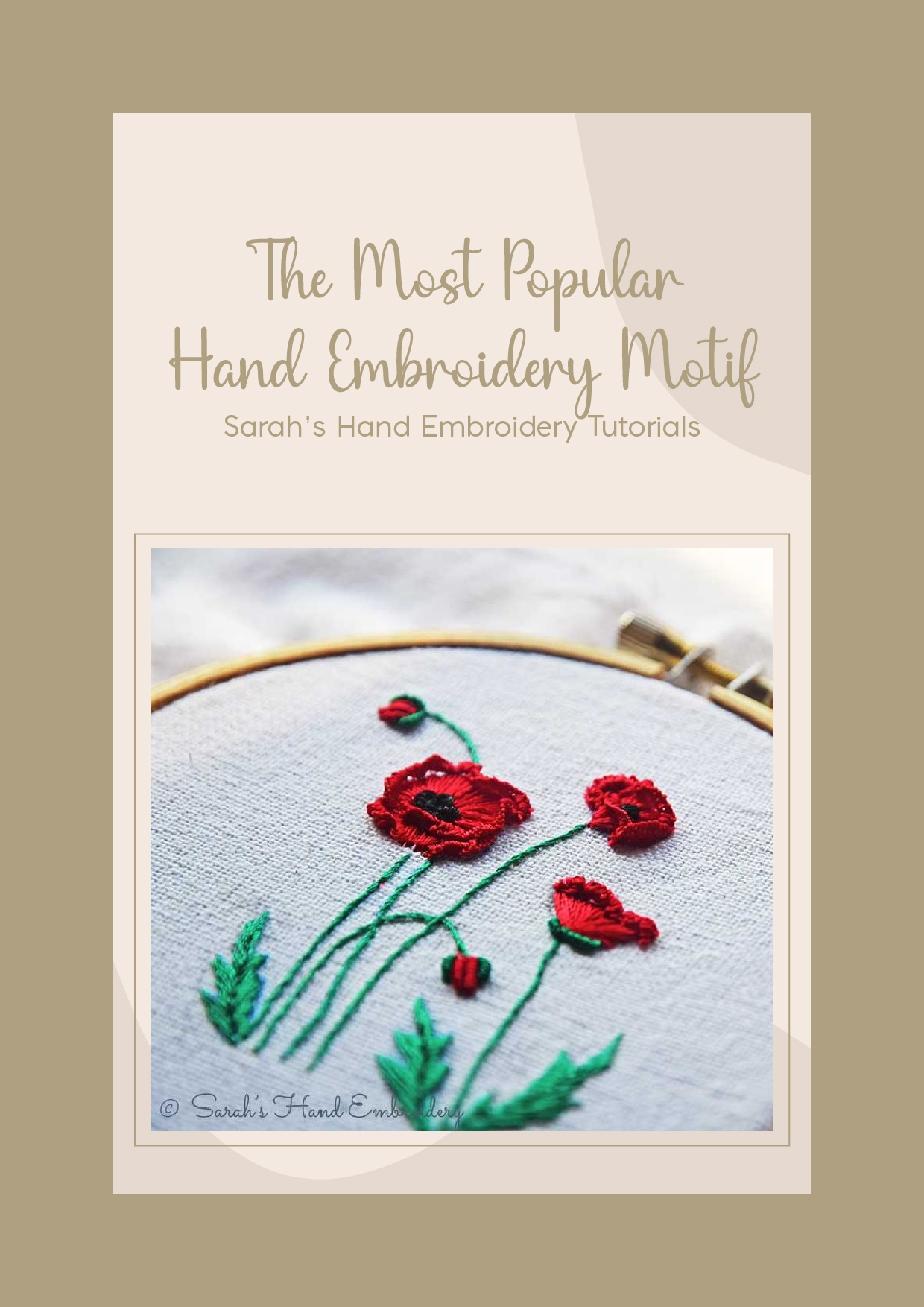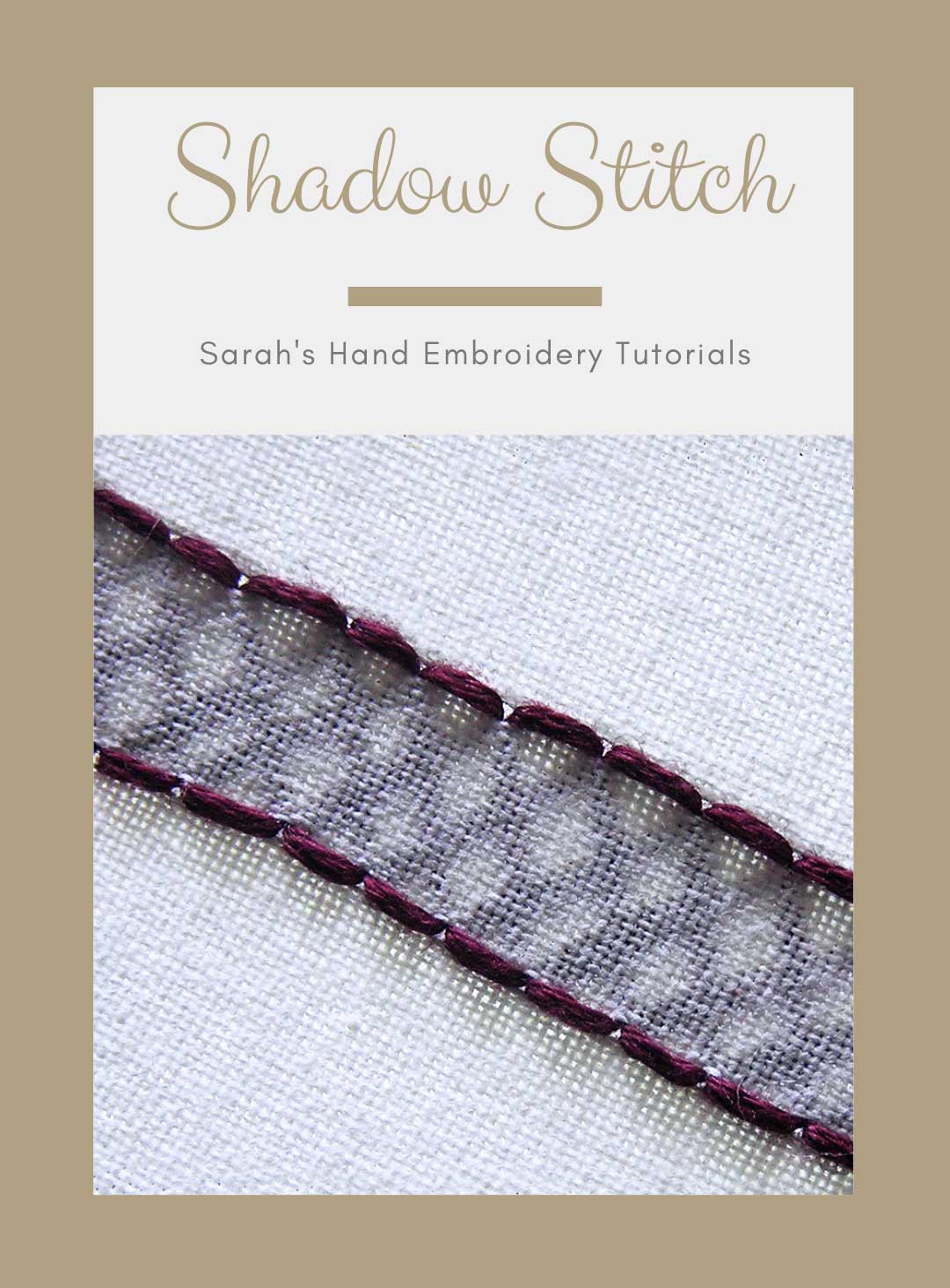
Sorbello Stitch is also known as
Punto de Sorbello [ES], Point de Sorbello [FR], Sorbello-Knoten [DE], Punto Sorbello [IT], Ponto Sorbello [PT].
About the Sorbello Stitch
The Sorbello Stich originated from Sorbello, a small village near Naples. It is an even-weave fabric stitch and looks like a series of crosses or Xs with a knot in the center. These ‘knots’ give the stitch a bumpy or grainy texture. Traditionally, the Sorbello Stitch was worked on a thick and coarse linen fabric using an equally coarse white or brown thread. It was used to decorate pillow covers, tablecloths, curtains, bags, and small mats with bands, monograms, or motifs. The Sorbello Stitch is adapted into surface embroidery and used beautifully for thick outlines and combining it with other stitches and beads. Once you learn this stitch, you can experiment widely by applying to various geometrical patterns like circles. You will then see how the same stitch could look different with each pattern. 🙂
How to do the Sorbello Stitch
I will follow a slightly curved line and work left to right. The thinner the thread or bigger the base, the more it accentuates the feature of this stitch. This stitch can also be done vertically by placing each ‘cross’ or section one under the other.
 |
 |
| Fig 1: Start by bringing out the needle through A and putting it in through B. Both these points lie above the stitch line. Then, bring the needle out through C which lies right under A and below the stitch line. | Fig 2: Keep the stitch A-B a bit loose. Take the needle under A-B without plucking the fabric beneath. |
 |
 |
| Fig 3: Now, once again take the needle under A-B as shown in the illustration. | Fig 4: Pull the needle out to get a knot as shown above and slightly pull it down to bend the stitch A-B towards the center. Then, put the needle in through D, a point right under B, and below the stitch line. Bring it back up again from B as shown. |
 |
 |
| Fig 5: Continue the procedure by taking the needle in through E, which lies above the stitch line, and bring it out through D. Make the knot and pull the stitch B-E towards the center so that the knot falls on the stitch line. Keep up with this procedure for the entire design. | Fig 6: A finished line of Sorbello Stitch would look like this. Using a thinner thread would have accentuated the features of this stitch. |
 |
|
| Fig 7: This is a sample of the Sorbello Stitch done on a broader base. Here, you can see the features of this stitch more clearly. |
Related Stitches in the Palestrina Stitch Family
Learn the stitches from our Hand Embroidery Book
Learn the Sorbello Stitch and 200 other stitches through our 450-page Hand Embroidery book.





 Sarah has been researching and sharing hand embroidery lessons for over 17 years, making it accessible to everyone around the globe.
Sarah has been researching and sharing hand embroidery lessons for over 17 years, making it accessible to everyone around the globe.





My absolute favourite stitch 😊. Sorbello stitch has give cross stitch a whole new status. ❤
I’ve seen this stitch done a bit differently than yours (in Lucinda Ganderton’s book called Stitch Sampler). I think the end result is the same. In Figure 2 she would take the needle up from the bottom and under the A – B stitch. Figure 3 she does it by keeping the thread to the left and comes down from the top with the needle going under the A – B stitch and over the thread that she has kept to the right. Her needle goes down at D. I still have to try your method. Can you tell me if the end result is the same. I just checked out Jan Beaney and Jean Littlejohn on the DVD (https://vimeo.com/49293912 ) and in Figure 2 they show going “anti clockwise” … they only show the first part of the stitch (which is different than you do). I’m going to check out a book from our Guild Library to see how Jan and Jean finish up the stitch. Now it seems there are 3 ways to do step 2/ figure 2.
Thank you for your tutorial on Sorbello Stitch, Sarah. It is a very useful stitch which, now that I’ve mastered it, will be using frequently.
hi sarah,
i am beginner. i have learnt all stitches from website. These stitches are given in very easy manner that anybody can learn it easily.
thank you.
Sarah, your site is too good for beginners. you made me your fan.
Help !!!!!
I wold love to print the tutorial for this stitch so I can play with it other than in front of my computer. Why is there no
button on which to click so that I have it in my stitch “dictionary ” ?
Thank you.
Alma Klindera
Dear Alma,
Sorry for being late to respond. I had been busy with my new born and travels.
If you wish to print this page, you can check the section just below the last picture in the tutorial. Look at the second row, last icon…that is where you click for printing this page. I hope this helps. 🙂
hi …its me again….Sarah…..i ‘m very confused here…..the beginning of the illustrations (fig 2 n 3)… n the final finished pictures seems to be little different…..wn i do it the way u’ve explained …it gives the stitch a slighly diff look….i tried soo many times nnn the finished look ‘s different…..from the 1 u ‘ve it in ur picture….could u pls help me out with this….sorry to disturb u now n then…
Dear Preetha,
All the procedure pictures correspond to the final picture, Fig6. Now, Fig7 is only a sample of how the stitch would look like if the ‘arms’ were made longer.
Did you try reading the descriptions below each picture?
This stitch should ideally look like a cross with a knot in the middle. The look might vary easily depending on how long you take your ‘arms’ or ‘legs’. If you see that your work has little legs sticking out of the corners of the knots, it means you have got the stitch correctly.
Try doing the stitch with longer ‘arms’, and let me know if you have got it. 🙂
Sarah su información es muy preciada y agradezco toda la información que brinda. parece todo complicada pero creo que con empeño y paciencia lo lograremos.
Cony
Estimado Cony,
Me alegro de que usted es capaz de disfrutar de nuestras páginas y apreciar nuestro trabajo. 🙂
Perdón por ser muy tarde para responder como lo habíamos estado manteniendo ocupado con algunos viajes y estudiantes para el verano.
Los mejores deseos.
Translated:
Dear Cony,
I am happy that you are able to enjoy our pages and appreciate our work. 🙂
Sorry for being very late to respond as we had been keeping busy with some travels and students for summer.
Best wishes.
It looks complicated at first bt once u stitch it its pretty easy!!!
:). Most stitches are like that!
I had once tried this stich along with the basque knot. I first laid the basque knot, then with a contrasting thread did the sorbello stitch over it in such a way that each knot of the basque knot fell in between the ‘diamond’ spaces of the sorbello stitch. It had come out pretty nicely.